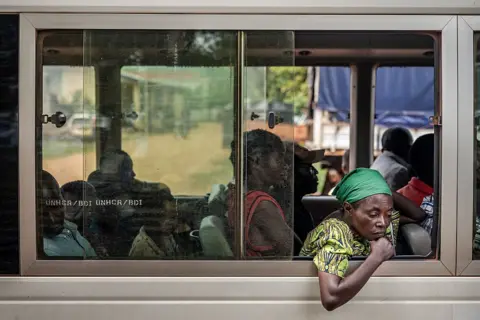In recent weeks, the United States has seen a notable increase in the number of White South Africans seeking refuge, often citing political instability, economic hardship, and concerns about their safety. While this influx has garnered media attention, it also underscores a complex and often overlooked disparity in how different refugee groups are treated and prioritized within U.S. immigration policies.
The Growing Presence of White South Africans in the US
According to data from the U.S. Citizenship and Immigration Services (USCIS), applications from White South Africans for asylum and other humanitarian protections have risen steadily over the past decade. Many of these applicants describe fears of violence, crime, and political unrest, particularly amidst South Africa’s ongoing struggles with high crime rates and economic inequality. The U.S. has historically been a destination for South African immigrants, but recent years have seen an increase in those citing safety concerns as their primary reason for seeking refuge.
US Policy and the Welcome Extended
The Biden administration has signaled a more receptive stance towards certain refugee groups, including White South Africans. In some cases, U.S. immigration officials have expedited processing or provided temporary protected status (TPS) for these applicants, acknowledging their safety concerns. Advocacy groups argue that this approach aligns with American values of offering refuge to those fleeing danger, regardless of race or nationality.
Contrasting Treatment of Other Refugee Groups
However, this welcoming attitude contrasts sharply with the experience of many other refugee populations. For example, African, Middle Eastern, and Central American migrants often face prolonged delays, stricter scrutiny, or outright denials. These groups frequently encounter systemic barriers such as limited access to legal resources, language obstacles, and political hostility.
Research from the Pew Research Center and other organizations highlights that refugee admission and asylum approval rates vary significantly based on nationality and race. While White South Africans may find pathways to safety relatively more accessible, Black Africans fleeing violence and persecution often encounter a more arduous process with lower approval rates.
The Limbo State for Many Refugees
Many refugees from marginalized regions remain in limbo—living in uncertainty and precarious legal status—long after initial applications. According to the United Nations High Commissioner for Refugees (UNHCR), thousands of asylum seekers are stuck in administrative backlogs, waiting years for decisions. This delay hampers their ability to work, access healthcare, or integrate into society fully.
This disparity raises questions about fairness and the criteria shaping U.S. refugee policies. Critics argue that prioritizing certain groups over others based on race or nationality perpetuates systemic inequalities and undermines the principles of equitable protection.
The Broader Context: Race, Politics, and Immigration
The differential treatment of White South Africans compared to other refugees is intertwined with broader societal issues—race, politics, and perceptions of safety. Some experts suggest that the narrative surrounding South Africa’s ‘white minority’ history influences perceptions and policy decisions, leading to more sympathetic treatment of White South Africans.
Conversely, refugees from predominantly Black or non-Western countries often face more skepticism, stricter vetting, and less public sympathy. This dynamic reflects longstanding biases and geopolitical considerations that continue to shape immigration policies.
Moving Toward Fairness and Equity
Addressing these disparities requires a nuanced understanding of refugee needs and a commitment to equitable treatment. Ensuring that all asylum seekers—regardless of race or nationality—receive fair processing and support is crucial for upholding human rights and international obligations.
Efforts are underway by advocacy groups and some policymakers to reform the asylum system, reduce processing backlogs, and eliminate biases. These initiatives aim to create a more just and compassionate framework that recognizes the dignity and rights of all refugees.
Conclusion
The United States’ growing welcome to White South Africans illustrates a complex and often inconsistent approach to refugee protection. While some groups benefit from expedited processes and sympathetic policies, many others remain in limbo, facing systemic barriers and delays. Recognizing and addressing these disparities is essential for fostering a truly fair and humane immigration system—one that upholds the core values of justice, equality, and compassion for all fleeing danger, regardless of race or nationality.
Email Us on editorial@nnafrica.com













